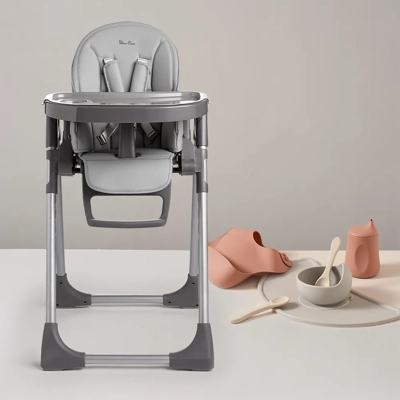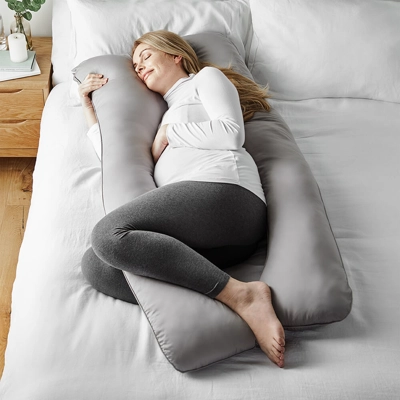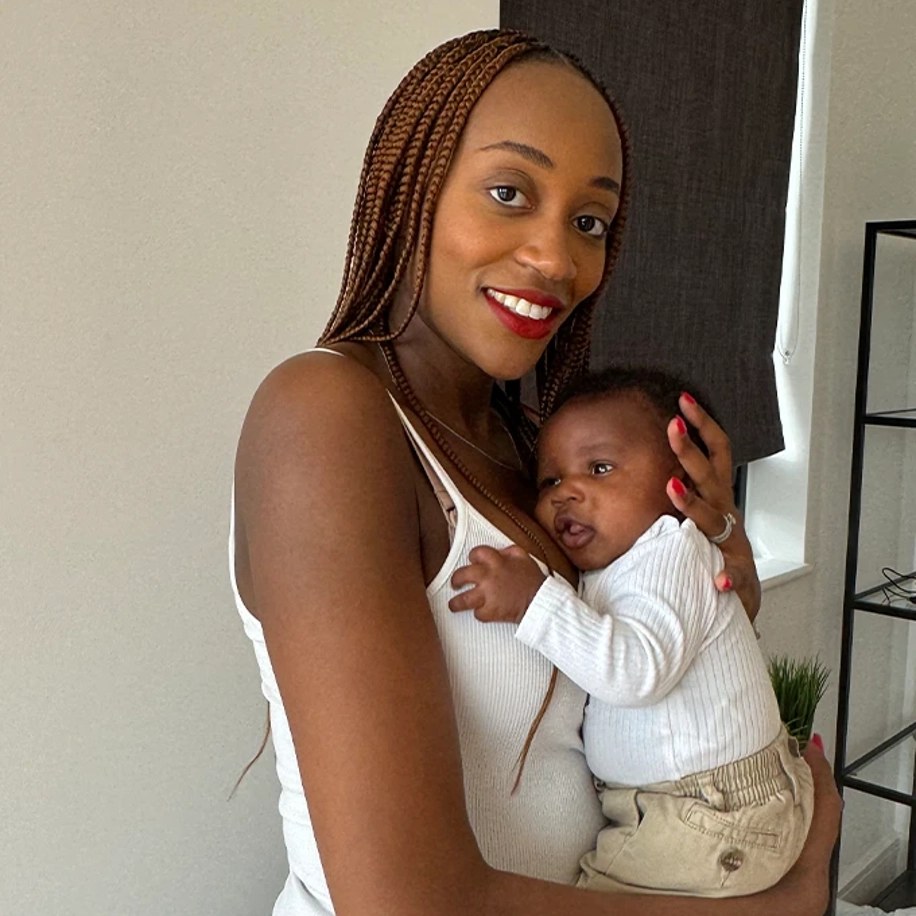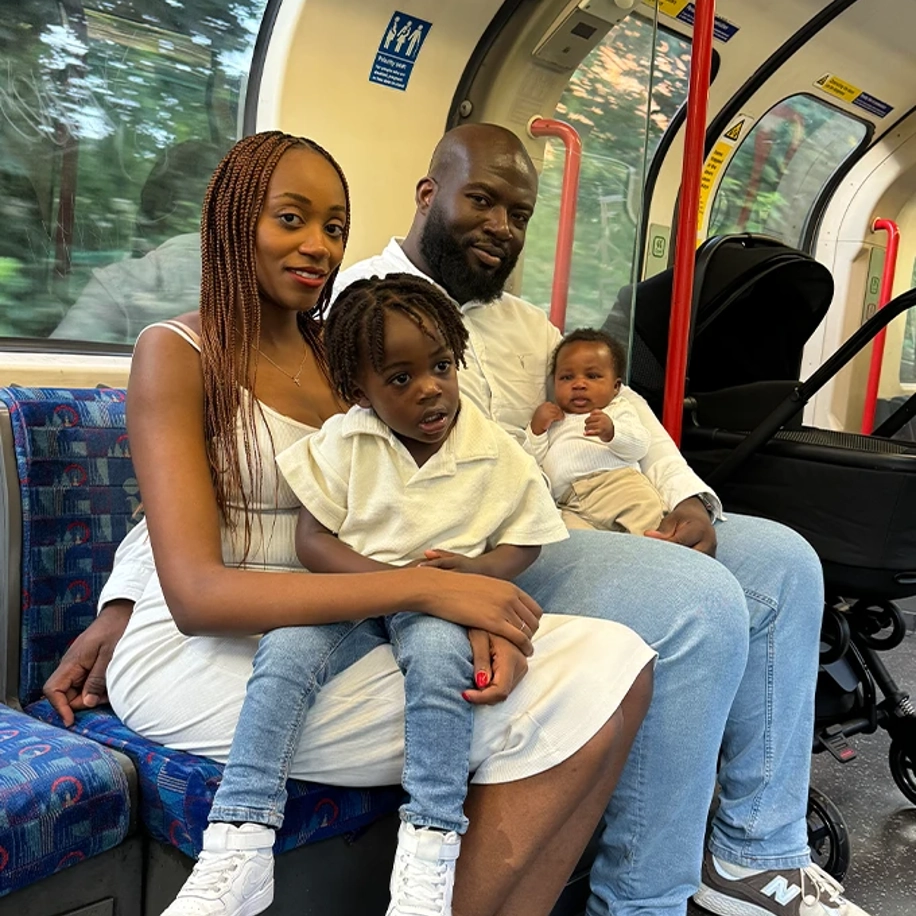
Sale
New In
Pushchairs & Strollers
Car Seats
Nursery
Feeding
Family Hub

Includes Buffet Highchair, Mealtime set, Silicone tray

Includes Clic 2 stroller, Clic stroller bag and rain cover


For the best night’s sleep in every trimester
Following an emergency C-section for her first child, Anna Deku felt pressured to have an elective C-section for baby number two.
After her own extensive research into a Vaginal Birth After C-Section (VBAC), Anna chose to push for a home birth instead of a C-section and shares her experience with The Edit.
I achieved a successful vaginal birth after a C-section (VBAC), overcoming intense pressure to choose an elective repeat Caesarean section for my second delivery.
"Once a C-section, always a C-section."
Many doctors advise women who've had a previous Caesarean birth to opt for another, citing “high risks”. C-sections are necessary in some cases, but it’s crucial not to blindly accept a doctor’s advice to have a C-section. I want to encourage every woman to be well-informed about their birth options, trust their instincts, and assert their right to choose how they give birth, especially in cases of low-risk pregnancies.
You have a voice and a say over your own body – know your options, question assumptions, and make the empowered choice that’s right for you.
I was considered low-risk throughout my previous pregnancy with Jeremiah, our firstborn.
On November 16, 2021, I began experiencing contractions, so we went to the hospital. A healthcare professional confirmed that I was 4cm dilated, indicating active labour. I was directed to a labour room but after about nine hours, we had to choose between going back home and going to the antenatal room because I “failed to progress.” We decided to stay. A few hours later, another midwife, who had just started her shift, put me on continuous monitoring.
The midwife noticed that Jeremiah’s heart rate started dropping during a contraction, prompting her to press the emergency button. About 10 doctors rushed in and discovered I was already 8cm dilated, which meant I shouldn’t have been in the antenatal room. With the situation escalating quickly and Jeremiah’s heart rate dropping, the doctors ultimately recommended an emergency Caesarean after arguing amongst themselves. That further added pressure to the already intense situation.
We attempted to challenge the doctors’ recommendation as we could see Jeremiah’s heart rate recovering each time. However, we caved into the pressure and ended up agreeing to the C-section. After the procedure, we asked if our newborn son was okay. We were told he was perfectly fine and not distressed.
Since then, we have always wondered if the C-section was necessary. When we questioned the necessity of the Caesarean, we never received a satisfactory answer. To this day, we believe the Caesarean was unnecessary. When I got pregnant the second time I began to reflect on my first birth experience, to learn more about our birthing options.

Turning fear into confidence: Overcoming VBAC anxiety with knowledge
Although I was hoping for a VBAC, I was still nervous about pursuing this journey due to the risks and pressure from OB-GYNs. So, to ease my worries, Gabes, being the supportive husband that he is, dedicated a significant amount of time and effort to learning about VBAC with me.
After thoroughly analysing the data, we found that serious complications during a Vaginal Birth After Caesarean (VBAC) are quite rare. The most serious risk, uterine rupture, occurs at a relatively low rate, estimated between 0.5% and 0.9% (about 1 in 200 to 1 in 100 women).
Despite the risks, I took comfort in the fact that many women had successful VBACs and went on to have healthy babies. About 25-30% of women who attempt a VBAC may ultimately require an emergency caesarean section, indicating a VBAC success rate of around 70-75%.
In addition to conducting extensive research, I booked a doula to support me throughout my pregnancy to help me achieve my desire to attempt VBAC. My doula was instrumental in further educating, enlightening, and empowering me to make informed decisions, such as changing hospitals.
She asked me, "Why are you still at the same hospital where you had your C-section? Do they support vaginal birth after C-section, and have you checked their policies?" These questions gave me a new perspective and led me to switch hospitals, which wasn’t originally part of the plan. It became crucial for me to align with a hospital that supported my goal of having a VBAC.
During the transition, my doula guided me in crafting a detailed birth plan to effectively communicate my desired approach with the new hospital. At the new hospital, Gabes and I spoke with the lead consultant midwife about my desire for a VBAC.
After reviewing our birth plan and discussing our preferences, the midwife suggested we consider a home birth. Our birth plan describes our ideal environment as calm and relaxed, incorporating music, LED tealights, essential oils, encouraging words, and family pictures. We envisioned maintaining a quiet, private space with dim lighting, regardless of where the birth takes place.
I was initially interested in the midwife-led birthing suite, but it posed significant challenges. The suite was closed 50% of the time, which meant there was a substantial risk it would be unavailable when I arrived at the hospital. Furthermore, as someone who’s had a prior C-section, I was classified as “high risk”. This meant I would require continuous monitoring, increasing the likelihood of another Caesarean section if I were in the hospital.
After much deliberation, I decided on a home birth. I was introduced to the two midwives who would support me. They were fantastic women and I had complete confidence in them. My birth team was complete with my husband Gabes, my doula, and my two midwives.
I started having contractions two days before our baby's early arrival. Since I was still 9 days away from my due date, I dismissed them as Braxton Hicks. On May 8, 2024, after picking up Gabes from the station and Jeremiah from nursery, the contractions intensified. So, Gabes and I started timing them and we were surprised to find the contractions were already five minutes apart. As they intensified, we decided to call our home birth team.
The midwives responded with a vital question in our chat group: “Can you feel a head?” Gabes checked and confirmed he could feel our baby’s head. Within 30 minutes our doula and midwife arrived and supported me with natural pain relief methods, honouring my wish to avoid medications. I moved from the bathroom floor to the bed and then to the birthing pool, where warm water provided comfort.
Despite everyone's encouragement, I couldn’t get into the optimal birthing position in the birthing pool due to the severe pain I was feeling. My midwives then recommended I move to the toilet, which would help me mimic a natural squat position, allowing me to progress further.
Once we were in the bathroom, everything escalated quickly. After two contractions, I was holding my second child, Kanaan Anthony Deku.

Our positive home birth after a C-section (HBAC) experience
When I finally gave birth to Kanaan, via a successful VBAC at home, I couldn’t be any more grateful for the choice I made.
The best part of our home birth was being able to sleep as a family of four after the beautiful experience of welcoming our new baby into the world through a successful vaginal delivery at home. It was truly the highlight of my VBAC experience at home.
In the UK, a pregnant woman has to be dilated 4 cm to be admitted to a labour ward. Hospital policies like this can create stress for pregnant women, as I experienced with my first son, Jeremiah. I think the pressure to progress quickly during my labour with Jeremiah at the hospital affected my contractions.
Choosing a VBAC at home offered me a sense of peace I lacked in the hospital when I gave birth to Jeremiah, leading to the positive birth experience I had. During Kanaan's labour, I was in a familiar, comfortable environment, free from the pressures and interventions common in a hospital setting.
My doula ensured the lights were dim and the space was as quiet, creating a calm, relaxing environment conducive to the release of birth hormones like oxytocin. This setting helped me progress quickly and naturally because I felt safe and secure, and was free from distractions.
During my home birth, I opted against continuous monitoring Instead, the midwives discreetly checked the baby's heart rate with a doppler every 15 minutes, which didn't interrupt me.
Research highlights that continuous monitoring can detect irregularities that may not necessarily indicate a problem, potentially leading to unnecessary interventions – something I experienced during Jeremiah's hospital birth.
Without continuous monitoring during my second labour, I was able to move more freely around the house. It helped me manage the intense pain and allowed the natural progression of labour to occur.

Continuous care
In hospitals, care can feel fragmented among different professionals, making the experience impersonal, as was the case when I gave birth to my first child.
Opting for a home birth meant I was able to enjoy the benefits of a continuous care model. The midwives who supported me throughout pregnancy were also there for the delivery and postpartum care, making the entire journey deeply personal. Building a relationship with these midwives and my doula from the start gave me a profound sense of security and confidence in my birth experience. The consistency and personalised support I received were invaluable.
After giving birth vaginally successfully, I can say that I’m immensely satisfied with the continuous care I receive from my midwives.
A C-section may not be painful during the procedure due to the anaesthesia and epidural, but the recovery is longer, and more arduous and painful than from a vaginal birth.
After giving birth to Jeremiah, once the pain medications wore off, I began feeling discomfort, especially at the uterine incision. For about a month or two, I couldn’t resume normal activities due to soreness and weak abdominal muscles.
Choosing a planned VBAC at home was influenced by the desire for fewer medical interventions. This meant a quicker postpartum recovery, less pain, and reduced complications like postpartum haemorrhage.
Without a C-section scar to heal this time, I was able to resume normal activities within days, immediately bonding with my newborn son through breastfeeding.
A successful VBAC decreases the likelihood of needing another C-section and increases the chances of uncomplicated vaginal deliveries in future pregnancies, which is crucial to me and Gabes if we choose to expand our family.
Despite the potential risks of a VBAC at home, we were confident in our choice because we were surrounded by supportive healthcare professionals who respected our birth plan, honoured our preferences, advocated for our needs, and understood our previous birth experience.
Our decision to pursue a planned HBAC was about reclaiming our birthing experience, aiming for a natural, intimate, and empowering journey into parenthood for the second time.
Sources: National Library of Medicine | Cleveland Clinic